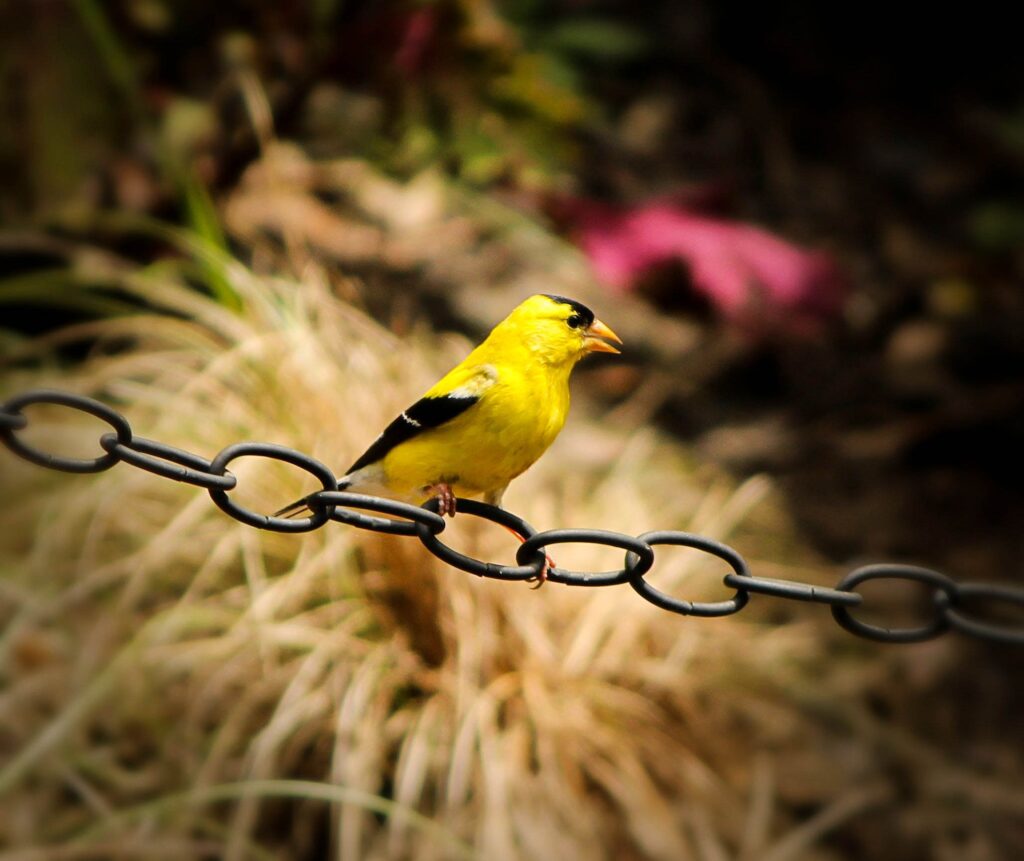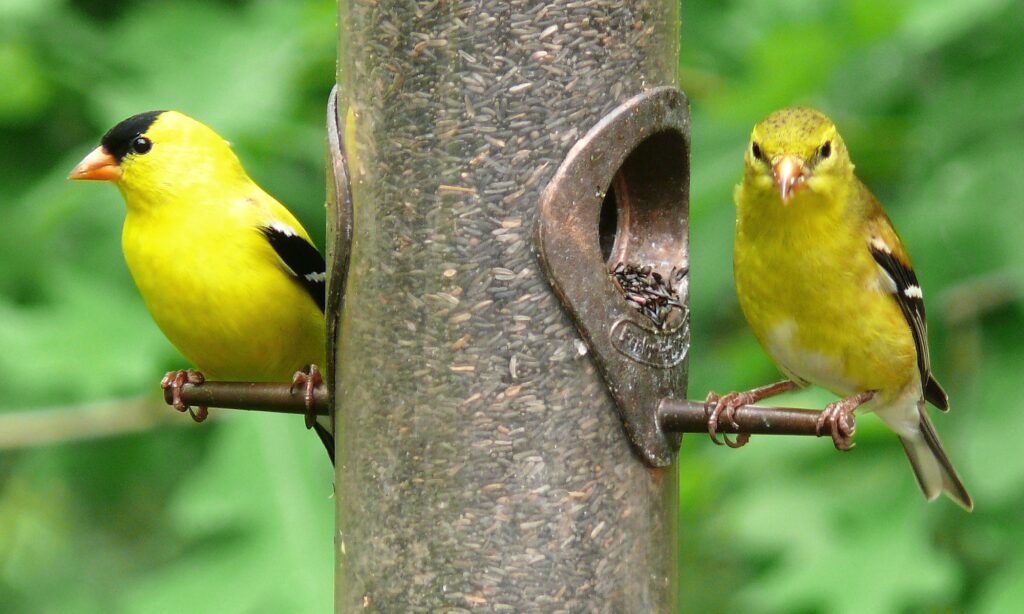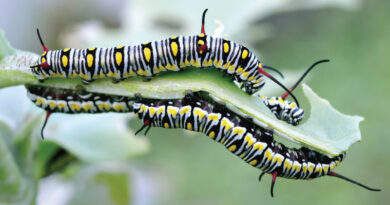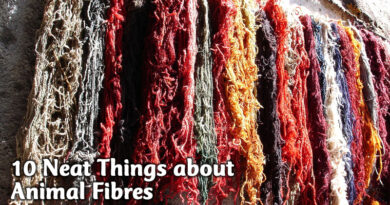Feathered Friends: American goldfinch
Feathered Friends with Sherrie Versluis
There is no summer bird more anticipated than the American goldfinch. This little bird fills the air with the sweetest songs and shines with brilliant yellow plumage. Often referred to as wild canaries, these birds are a popular summer attraction to backyard bird feeders. Their friendly disposition and almost tame nature makes them a joy to be around while working in the garden too.
The American goldfinch is approximately 5 1/2 inches long with a wingspan of nearly eight inches and weighs less than an ounce. The beak is a conical shape designed to extract seeds from the heads of many weeds and flowers. Some of their favourites are coneflowers, thistles and sunflowers. The beak is a pink hue but in spring turns a bright orange as breeding season begins. During winter both sexes are a dull gray or olive-brown but these drab colours are replaced by brilliant plumage in spring. The male turns into a lemon yellow with prominent black wing bars and a perfect black cap. In flight this is all accented with a snow white rump. The female is an olive colour with wing bars and a yellow bib.
The songs of the American goldfinch are plentiful and all are truly very sweet. There are warbles and tweets and even twitters. Some calls are made only during flight, others are defense or distress calls if a predator is near, and the rest are all forms of communication between the adult birds themselves or to their young.

The breeding season for American goldfinches is the latest of any bird. It is believed that the timing coincides with the ripening of thistle plants, one of their favourite foods. Starting in late July the male will begin courtship with amazing aerial maneuvers accompanied by beautiful singing. The male will display different flight patterns to show a female his good health. Once the female accepts, the pair will fly together in wide circles as the male sings a song of celebration. The territory is selected by the male which involves more interesting calls and flight behaviour to signal the right spot.
The nest is built by the female in a shrub or tree and takes about a week to complete. The male assists in collecting materials like weeds, vines, and grasses but the full construction is the females job. The inside of the nest is completed with soft down from plants like milkweed, cattails and thistle. These nests are built so well and woven so tightly they can hold water. Four to six eggs are laid and the female is the sole incubator while the dedicated male brings food to the nest for her. Incubation time is 12-14 days and like most birds, development is rapid as the young leave the nest about 15 days after hatching. The fledglings are fed by the parents for another three weeks until they are fully capable of fending for themselves.
The diet of goldfinches consists mainly of seeds including thistle, dandelion, ragweed, sunflower and alder. Other foods are sap, berries and tree buds. Insects are eaten only on occasion usually when extra protein is needed for their young during nesting season. At birdfeeders goldfinches can be attracted by using a specially designed bird feeder that dispenses nyjer seed. They are also very fond of window feeders which suction cup to the pane and are a great deterrent to birds striking windows. Shelled sunflowers are a real treat to offer in these feeders and the goldfinches really enjoy it.
To encourage American goldfinches to your yard consider planting zinnias, asters, purple coneflowers, cosmos, bee balm, black-eyed susans, sunflowers and goldenrod. The right trees and shrubs are a good addition to provide nesting spaces like dogwoods, caragana, and maple trees. Bring some extra beauty into your yard this summer by attracting one of nature’s most colourful little gems, the American goldfinch!
Sherrie Versluis owns The Preferred Perch Wild Birds and Specialty Gift Store in Winnipeg, Manitoba.

@ 2023 Pegasus Publications Inc.




